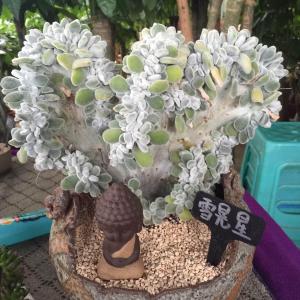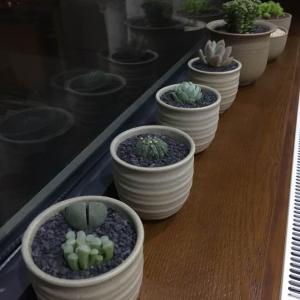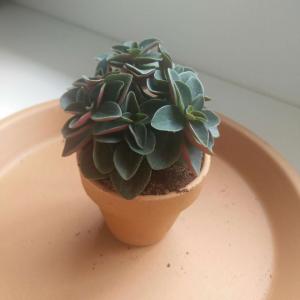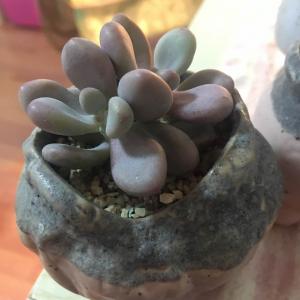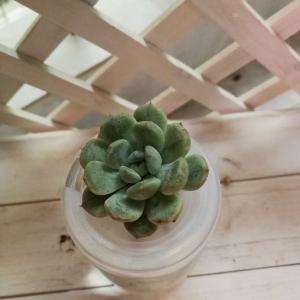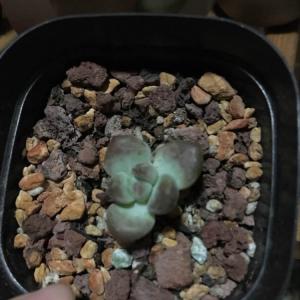666
2017年08月25日

2017年8月20日 自16年7月 第一批幸存 ①星球 ②小米星 (①②长势最好) ③静夜 ④奥普琳娜(③④长高抽条 都快认不出了) ⑤帝玉 (⑤本来好好的都分瓣了 不知道怎么回事 抢救中)
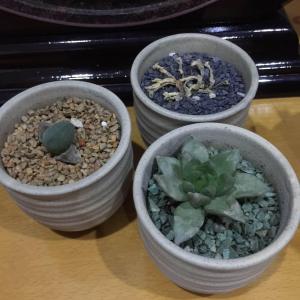
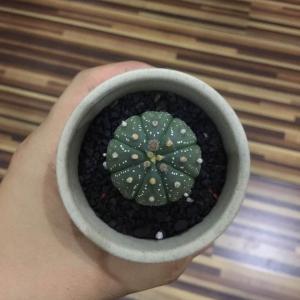
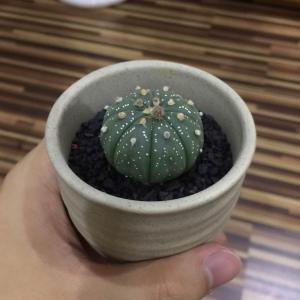
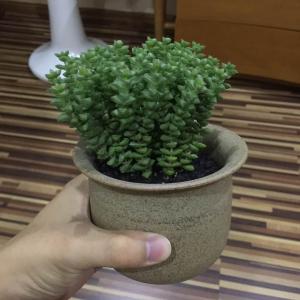
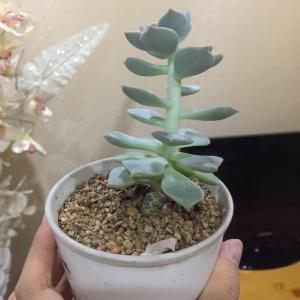
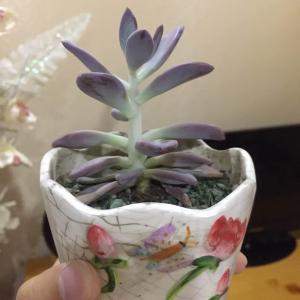
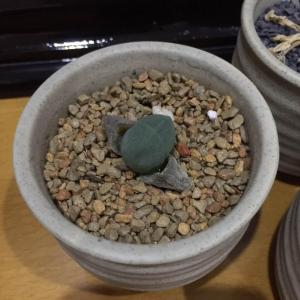







0
0
文章
Dummer. ゛☀
2017年08月24日

Can rosemary survive outside over winter? The answer depends on your growing zone, as rosemary plants are unlikely to survive temperatures below 10 to 20 F. (-7 to -12 C.). If you live in USDA plant hardiness zones 7 or below, rosemary will only survive if you bring it indoors before the arrival of freezing temperatures. On the other hand, if your growing zone is at least zone 8, you can grow rosemary outdoors year round with protection during the chilly months. However, there are exceptions, as a few newer rosemary cultivars have been bred to survive temperatures as low as USDA zone 6 with ample winter protection. Ask your local garden center about ‘Arp,’ ‘Athens Blue Spire’ and ‘Madeline Hill.’ Read on to learn about protecting rosemary plants in winter.
How to Protect Rosemary in Winter
Here are some tips for winterizing rosemary plants:
Plant rosemary in a sunny, sheltered location where the plant is protected from harsh winter winds. A warm spot near your house is your best bet. Prune the plant to about 3 inches after the first frost, then bury the plant entirely with soil or compost. Pile 4 to 6 inches of mulch such as pine needles, straw, finely chopped mulch or chopped leaves over the plant. (Be sure to remove about half of the mulch in spring.) Unfortunately, there is no guarantee that your rosemary plant will survive a cold winter, even with protection. However, you can add a bit of extra protection by covering the plant with a frost blanket during cold snaps. Some gardeners surround rosemary plants with cinderblocks before adding mulch. The blocks provide extra insulation and also help hold the mulch in place.

How to Protect Rosemary in Winter
Here are some tips for winterizing rosemary plants:
Plant rosemary in a sunny, sheltered location where the plant is protected from harsh winter winds. A warm spot near your house is your best bet. Prune the plant to about 3 inches after the first frost, then bury the plant entirely with soil or compost. Pile 4 to 6 inches of mulch such as pine needles, straw, finely chopped mulch or chopped leaves over the plant. (Be sure to remove about half of the mulch in spring.) Unfortunately, there is no guarantee that your rosemary plant will survive a cold winter, even with protection. However, you can add a bit of extra protection by covering the plant with a frost blanket during cold snaps. Some gardeners surround rosemary plants with cinderblocks before adding mulch. The blocks provide extra insulation and also help hold the mulch in place.

0
0
文章
玲儿
2017年08月23日

ネメシアの育て方・栽培方法
育て方のポイント
栽培環境・日当たり・置き場
鉢植えは、1年を通して戸外に置きましょう。9月から6月は日なた、7月から8月は風通しのよい半日陰、1月から2月は北風を避けられる南向きの軒下などの、暖かい場所に置きましょう。夏は雨に当てないほうが、夏越ししやすくなります。
庭植えでは、日当たりがよく水はけのよい場所に植えましょう。レイズドベッドやロックガーデンにも適します。
水やり
鉢植えには、1年を通じて土の表面が乾いたら、たっぷり水を与えましょう。庭植えの場合は、雨がまったくかからない場所以外は、特に水を与える必要はありません。
肥料
鉢植えでは、9月から10月と3月から6月の間に、薄めの液体肥料を2週間に1回施します。濃い肥料を施すと、根が傷むので注意します。
庭植えでは、植えつけ時に緩効性化成肥料を元肥として施せば、追肥の必要はありません。夏越しさせた株には、9月から10月に緩効性化成肥料を追肥しましょう。

病気と害虫
病気:灰色かび病、ウイルス病など
灰褐色のかびで覆われる灰色かび病の発生は、10月から11月、3月から7月に見られます。特に長雨時や、株が茂って風通しが悪いと多発します。放置した花がらが発生源になるので、こまめに取り除きましょう。
風通しをよくすれば灰色かび病は改善しますが、改善が見られず、葉や茎が黒く枯れる症状はウイルスが原因である可能性があります。周囲の植物にも伝染する危険性が高いので、見つけしだい、株を抜き取って廃棄しましょう。ハサミなどの器具で伝染したり、スリップスやアブラムシなどの害虫が媒介するので注意します。
害虫:アブラムシなど
3月から11月にアブラムシが発生することがあります。

用土(鉢植え)
水はけのよい土(赤玉土中粒5、腐葉土3、酸度調整済みピートモス2の配合土など)に、有機石灰を1~3g/1リットル加えた土を好みます。リン酸分に富んだ緩効性化成肥料を適量混合して、使用します。
植えつけ、 植え替え
植えつけ、植え替えともに、春と秋が適期です。植え替えは、年1回行いましょう。根鉢を軽くくずし、一回り大きな鉢に植えつけます。庭植えの場合は、秋に掘り上げて元肥を施し、軽く耕してから再度植え直しましょう。

ふやし方
タネまき:タネまきの適期は10月です。タネは高温では発芽しにくいので、涼しくなってからまきましょう。覆土は、タネが見える程度にごく薄くかけます。
さし木:さし木の適期は3月から6月、9月から10月です。葉をつけて2~3節に切った茎を、肥料分の少ない清潔な用土にさします。3週間程度で、移植できる株に育ちます。

主な作業
花がら摘み:10月から6月の開花期間中、咲き終わった花はすぐに散って株の上に散乱するので、こまめに取り除きましょう。そのままにしておくと、灰色かび病が発生して健全な葉や茎も枯れてしまいます。
切り戻し:9月から6月、花が咲き終わってきたら、草丈の半分程度の長さに切り戻します。切り戻すことで、新芽の発生が促されます。切る際は、ウイルスの感染を予防するために、熱湯や塩素で消毒したハサミを使うか、清潔な手で折り取るとよいでしょう。
育て方のポイント
栽培環境・日当たり・置き場
鉢植えは、1年を通して戸外に置きましょう。9月から6月は日なた、7月から8月は風通しのよい半日陰、1月から2月は北風を避けられる南向きの軒下などの、暖かい場所に置きましょう。夏は雨に当てないほうが、夏越ししやすくなります。
庭植えでは、日当たりがよく水はけのよい場所に植えましょう。レイズドベッドやロックガーデンにも適します。
水やり
鉢植えには、1年を通じて土の表面が乾いたら、たっぷり水を与えましょう。庭植えの場合は、雨がまったくかからない場所以外は、特に水を与える必要はありません。
肥料
鉢植えでは、9月から10月と3月から6月の間に、薄めの液体肥料を2週間に1回施します。濃い肥料を施すと、根が傷むので注意します。
庭植えでは、植えつけ時に緩効性化成肥料を元肥として施せば、追肥の必要はありません。夏越しさせた株には、9月から10月に緩効性化成肥料を追肥しましょう。

病気と害虫
病気:灰色かび病、ウイルス病など
灰褐色のかびで覆われる灰色かび病の発生は、10月から11月、3月から7月に見られます。特に長雨時や、株が茂って風通しが悪いと多発します。放置した花がらが発生源になるので、こまめに取り除きましょう。
風通しをよくすれば灰色かび病は改善しますが、改善が見られず、葉や茎が黒く枯れる症状はウイルスが原因である可能性があります。周囲の植物にも伝染する危険性が高いので、見つけしだい、株を抜き取って廃棄しましょう。ハサミなどの器具で伝染したり、スリップスやアブラムシなどの害虫が媒介するので注意します。
害虫:アブラムシなど
3月から11月にアブラムシが発生することがあります。

用土(鉢植え)
水はけのよい土(赤玉土中粒5、腐葉土3、酸度調整済みピートモス2の配合土など)に、有機石灰を1~3g/1リットル加えた土を好みます。リン酸分に富んだ緩効性化成肥料を適量混合して、使用します。
植えつけ、 植え替え
植えつけ、植え替えともに、春と秋が適期です。植え替えは、年1回行いましょう。根鉢を軽くくずし、一回り大きな鉢に植えつけます。庭植えの場合は、秋に掘り上げて元肥を施し、軽く耕してから再度植え直しましょう。

ふやし方
タネまき:タネまきの適期は10月です。タネは高温では発芽しにくいので、涼しくなってからまきましょう。覆土は、タネが見える程度にごく薄くかけます。
さし木:さし木の適期は3月から6月、9月から10月です。葉をつけて2~3節に切った茎を、肥料分の少ない清潔な用土にさします。3週間程度で、移植できる株に育ちます。

主な作業
花がら摘み:10月から6月の開花期間中、咲き終わった花はすぐに散って株の上に散乱するので、こまめに取り除きましょう。そのままにしておくと、灰色かび病が発生して健全な葉や茎も枯れてしまいます。
切り戻し:9月から6月、花が咲き終わってきたら、草丈の半分程度の長さに切り戻します。切り戻すことで、新芽の発生が促されます。切る際は、ウイルスの感染を予防するために、熱湯や塩素で消毒したハサミを使うか、清潔な手で折り取るとよいでしょう。
0
0
文章
Miss Chen
2017年08月10日

A Lady Banks rose (Rosa banksia) produces cascades of yellow or white flower clusters. It grows in U.S. Department of Agriculture plant hardiness zones 7 through 10. This wild rose looks best when allowed to grow in its natural form, but infrequent pruning can help keep it in bounds while still ensuring ample flowering.

Ready Your Shears
Two types of shears are needed to prune a Lady Banks rose. Basic loppers handle most pruning needs, but you will need smaller hand pruners or bypass shears for shaping the bush. Wipe the shear blades with a cloth soaked in rubbing alcohol to disinfect them before you prune. If you cut out diseased wood or are moving between plants, wipe the shears again. Some varieties of Lady Banks roses have thorny stems, so wear leather gardening gloves and long sleeves if you are trimming a thorned variety.
Timing Is Everything
Lady Banks roses flower on 2- or 3-year-old canes, so they don't require annual pruning except to remove damaged wood. Pruning too frequently will remove the flowering canes so there are no blooms and only foliage. These roses only flower once a year in late spring or early summer. Prune Lady Banks immediately after this annual flowering, before the plant begins to set new buds for the following year.
Thinning It Out
Thinning allows for air circulation within the rose bush, which improves flowering and minimizes disease concerns. Yellow and brown canes are completely dead, so remove these at ground level using the loppers. You can also remove the tallest and thickest canes at ground level to open up the center of the plant for air circulation. Pruning these out also lets in more light, so the smaller canes can leaf out and set flower buds. Also, remove any damaged canes, either cutting them off at ground level or cutting them back to the nearest outward facing bud or leaf on healthy wood.

Shaping Up
Light shaping every two years helps keep the sprawling, climbing canes of the Lady Banks rose under control, but you don't want to over prune and lose the plant's natural form. Begin by cutting back any overgrown canes, especially those that extend over walkways, or are wrapping around structures or tree branches. Cut these back to a bud or leaf at the desired cane length using the bypass shears. You can also prune back dull green canes to manage their height, but don't prune back the bright green canes because these are your future flowering stems. After pruning, remove the clippings from the bed, and compost or dispose of them.

Ready Your Shears
Two types of shears are needed to prune a Lady Banks rose. Basic loppers handle most pruning needs, but you will need smaller hand pruners or bypass shears for shaping the bush. Wipe the shear blades with a cloth soaked in rubbing alcohol to disinfect them before you prune. If you cut out diseased wood or are moving between plants, wipe the shears again. Some varieties of Lady Banks roses have thorny stems, so wear leather gardening gloves and long sleeves if you are trimming a thorned variety.
Timing Is Everything
Lady Banks roses flower on 2- or 3-year-old canes, so they don't require annual pruning except to remove damaged wood. Pruning too frequently will remove the flowering canes so there are no blooms and only foliage. These roses only flower once a year in late spring or early summer. Prune Lady Banks immediately after this annual flowering, before the plant begins to set new buds for the following year.
Thinning It Out
Thinning allows for air circulation within the rose bush, which improves flowering and minimizes disease concerns. Yellow and brown canes are completely dead, so remove these at ground level using the loppers. You can also remove the tallest and thickest canes at ground level to open up the center of the plant for air circulation. Pruning these out also lets in more light, so the smaller canes can leaf out and set flower buds. Also, remove any damaged canes, either cutting them off at ground level or cutting them back to the nearest outward facing bud or leaf on healthy wood.

Shaping Up
Light shaping every two years helps keep the sprawling, climbing canes of the Lady Banks rose under control, but you don't want to over prune and lose the plant's natural form. Begin by cutting back any overgrown canes, especially those that extend over walkways, or are wrapping around structures or tree branches. Cut these back to a bud or leaf at the desired cane length using the bypass shears. You can also prune back dull green canes to manage their height, but don't prune back the bright green canes because these are your future flowering stems. After pruning, remove the clippings from the bed, and compost or dispose of them.
0
1
文章
Miss Chen
2017年08月10日

The ability of a plant to obtain necessary plant nutrients depends largely on the pH of its soil, measured on a scale of 1 to 14. Acidic soil, sometimes called "sour" soil, has a pH below 7, considered neutral. Alkaline soil, sometimes called "sweet" soil, has a pH above 7. Most rose cultivars prefer a pH between 6 and 7. If your soil pH is below 6, you can increase the number by adding lime.

Climate and Soil
There are between 150 and 300 species and 6,000 cultivars in the Rosa genus. Roses will grow in most soils that have a high organic content, in U.S. Department of Agriculture plant hardiness zones 4b to 10b, depending on the species and cultivar. To determine if you need to add lime to your soil you have to know its pH. Test it either in the fall or spring.
Testing Soil pH
Use a spade, spoon or trowel to take a sample from the top 6 to 8 inches of soil. Do not do this when the soil is wet. Spread the sample on plastic wrap and let it dry overnight. When it's completely dry, remove stones and solid matter and put the soil in a plastic bag. It's now ready to test using a home soil testing kit that you can buy from most garden supply centers. Alternatively, you can have it tested by a commercial testing service that will also tell you of any mineral deficiencies in the soil. If your soil pH is too low for roses, add lime to raise the number.
How Much Lime to Apply
Finely ground limestone, calcium carbonate, available at most garden supply centers, is typically recommended for home gardeners. How much lime to apply to raise soil pH to 6.5, ideal for roses, depends on the type of soil. For clay soil: Add 29 1/2 ounces of lime per square yard to raise pH from 5.5 to 6.5, 41 1/4 ounces per square yard to 5 pH clay soil, and 53 ounces per square yard for 4.5 pH, per recommendations from The Royal Horticultural Society. For loam soil: Add 23 1/2 ounces of lime per square yard to raise pH from 5.5 to 6.5, 35 1/4 ounces per square yard on 5 pH loam soil, and 44 1/4 ounces per square yard on 4.5 pH. For sandy soil: Add 20 1/2 ounces of lime per square yard to raise pH from 5.5 to 6.5, 29 1/2 ounces per square yard to 5 pH sandy soil, and 38 1/4 ounces to 4.5 pH.

How to Apply
Winter is a good time to apply lime. If you apply more than 14 3/4 ounces of lime per square yard, dig half of it into the top 6 inches of soil and sprinkle the other half on the surface when you're finished. If you apply less than that amount per square yard, dig all of it into the soil. If digging is impractical, sprinkle all of it on top of the soil. It's best to add lime before you plant roses. If you sprinkle it around plants, it can take years to have any effect.

Climate and Soil
There are between 150 and 300 species and 6,000 cultivars in the Rosa genus. Roses will grow in most soils that have a high organic content, in U.S. Department of Agriculture plant hardiness zones 4b to 10b, depending on the species and cultivar. To determine if you need to add lime to your soil you have to know its pH. Test it either in the fall or spring.
Testing Soil pH
Use a spade, spoon or trowel to take a sample from the top 6 to 8 inches of soil. Do not do this when the soil is wet. Spread the sample on plastic wrap and let it dry overnight. When it's completely dry, remove stones and solid matter and put the soil in a plastic bag. It's now ready to test using a home soil testing kit that you can buy from most garden supply centers. Alternatively, you can have it tested by a commercial testing service that will also tell you of any mineral deficiencies in the soil. If your soil pH is too low for roses, add lime to raise the number.
How Much Lime to Apply
Finely ground limestone, calcium carbonate, available at most garden supply centers, is typically recommended for home gardeners. How much lime to apply to raise soil pH to 6.5, ideal for roses, depends on the type of soil. For clay soil: Add 29 1/2 ounces of lime per square yard to raise pH from 5.5 to 6.5, 41 1/4 ounces per square yard to 5 pH clay soil, and 53 ounces per square yard for 4.5 pH, per recommendations from The Royal Horticultural Society. For loam soil: Add 23 1/2 ounces of lime per square yard to raise pH from 5.5 to 6.5, 35 1/4 ounces per square yard on 5 pH loam soil, and 44 1/4 ounces per square yard on 4.5 pH. For sandy soil: Add 20 1/2 ounces of lime per square yard to raise pH from 5.5 to 6.5, 29 1/2 ounces per square yard to 5 pH sandy soil, and 38 1/4 ounces to 4.5 pH.

How to Apply
Winter is a good time to apply lime. If you apply more than 14 3/4 ounces of lime per square yard, dig half of it into the top 6 inches of soil and sprinkle the other half on the surface when you're finished. If you apply less than that amount per square yard, dig all of it into the soil. If digging is impractical, sprinkle all of it on top of the soil. It's best to add lime before you plant roses. If you sprinkle it around plants, it can take years to have any effect.
0
0
文章
Colour_
2017年08月09日

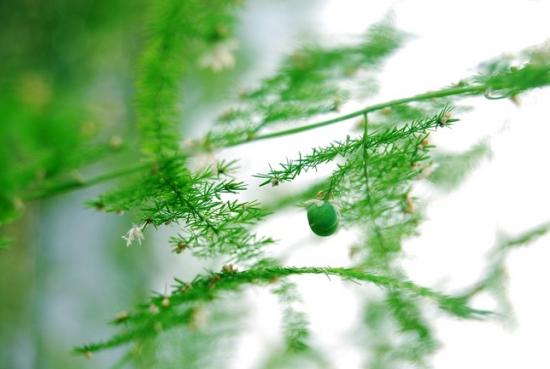
播种繁殖#文竹 ,先要培养种株采收种子。7—8月将当年牛苗移栽在头号桶盆,用培养土上盆,充分腐熟的麻酱渣作底肥,这样当年的苗就可生长到50厘米以上。来年春季可换二缸子盆,施马掌片作底肥,每星期可施腐熟的麻酱渣水2次。
夏季应放阴凉通风处,高温时节停止施肥。秋末人室,这时植株已高1米以上,需要绑扎竹架。如在温室一角挖1个长方形的池子(长100厘米,宽50厘米,深60厘米),池内放人培养土,并施腐熟麻酱渣1千克和过磷酸钙250克作基肥,把文竹移植在池内,沿池长搭1个长2―3米,高1.7米、宽1米的长方架,架子上每隔20厘米搭一根竹竿,把枝条均匀地引到架子上,夏季打开门窗,上盖苇帘,来年秋即可开花结籽。如没有温室可将文竹换入坯子盆,用培养土加马掌片和过磷酸钙作底肥,盆上用竹竿搭立架,来年也可开花结籽。
日常管理注意剔除过弱、过密的枝条,以保证通风,有利开花结籽。盆栽文竹开花期间要防备大风吹和雨淋,也不要浇大水,最好不要移动花盆以免掉花。种子发黑成熟后采收,在气温15℃以上时,用素面沙土播种,覆土厚2毫米,经常保持盆土湿润,1个月左右发芽,2个月就可分盆。上盆时,应注意将根盘旋于盆底,不要弄断。

另:怎样矮化文竹使之小巧玲珑
首先,要适当控制肥水。第一年栽植的小文竹,要加强肥水,使其尽快成形观赏。到第二年就要开始控制肥水。尤其在春、夏、秋生长旺季,要控肥、控水。每月施1次稀淡液肥即可。水一定要做到见干再浇,干要干到盆土分离的程度,控水要适度。过干,枝叶易枯黄或干尖。所以,在控水期要加强叶面喷水,避免太阳直射。
其次是要控制个体枝叶生长规模。一般每盆有5~10个丛生枝叶,上下错落或在同一水平面均匀分布。枝叶过多,则会出现拥挤、紊乱,不利发挥每片叶的观赏效果。所以,2~3年应分株换盆1次,这样既可调控枝叶规模,又可更新繁殖,一举几得。分株的方法最好是将文竹带土倒出后,放在水中将土浸散,冲出泥土,使根系裸露。然后看准根系与枝叶的关系,每3~4枝带根切开,剪除老根、腐根后,栽到10~12厘米的小盆中浇透水遮荫养护。分盆后的文竹如出现偏冠,应通过植物的趋光原理和萌生的新枝来调整。
最后是通过修剪、摘心控制疯长。攀缘性徒长枝,可以培养成开花结籽的主蔓。但是,作为矮化观赏文竹,它起着扰乱株形的作用。除了在头一二年可以通过在展叶前摘心或展叶后补截,使之早日成形外,应该从基部疏剪掉。对成形后的文竹应随时疏剪掉徒长枝、老枝、枯黄枝和细弱畸形枝,使其保持一定数量的枝叶。
通过以上方法,定会使你养的文竹层次分明,呈现出云片般的盆景形态。
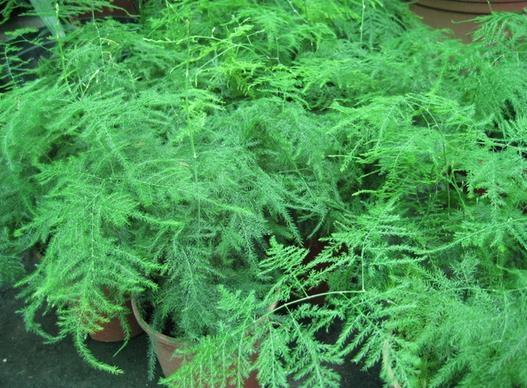
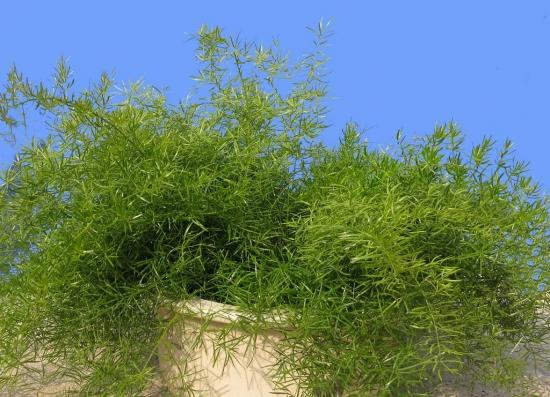
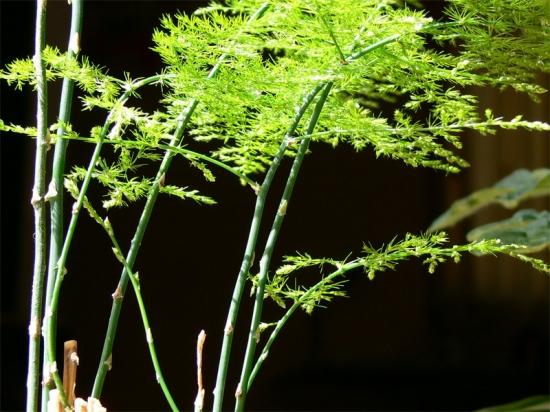
0
1
文章
Colour_
2017年08月09日

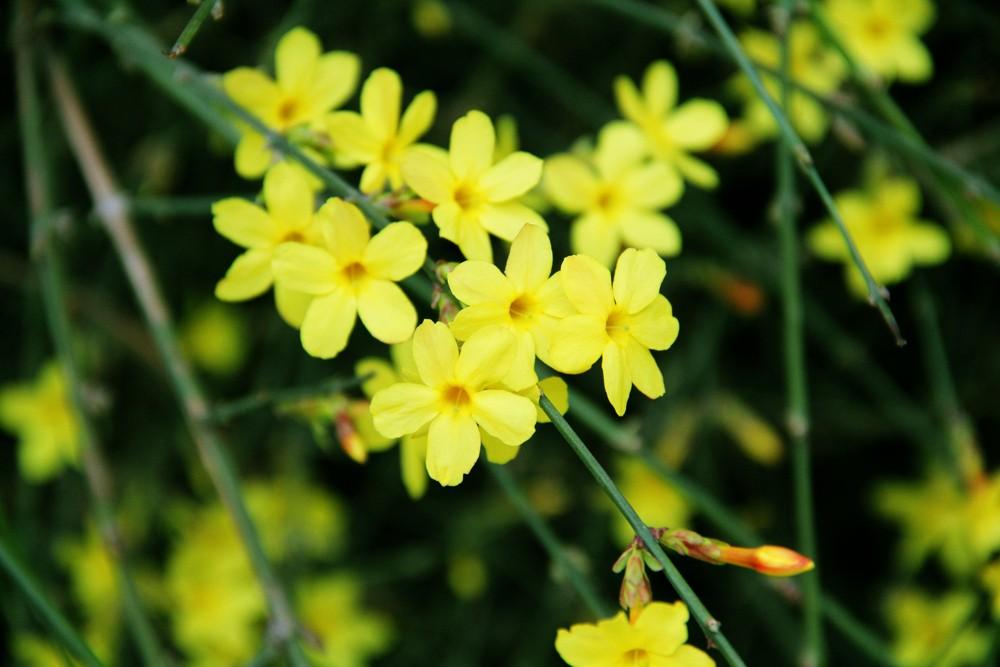
①在严寒到来之前将盆花移至朝南向阳的阳台上。
②7~8月间,每15~20天施1次稀薄豆饼液肥。8~10月改为10~15天施1次。
③早春应对植株的内堂枝、细枝或枯枝进行修剪,对徒长枝进行短截,加强通风透光。
0
0
文章
Colour_
2017年08月08日


#茉莉花 花期
茉莉花洁白浓香,自夏至秋开花不断,其中7月~8月为盛花期,花大而香,数量也多。据传若加强花期管理,一年可呈现三期盛花,有兴趣的朋友不妨一试。
茉莉花呈现三期盛花的养护技巧
1、早期摘花:6月上旬,茉莉陆续开出早花,但这批花一般小而少,要及时摘去,否则消耗养分过多,会影响其以后开花的质量与数量,并且延迟花期,影响观赏。摘花方法是连花带叶嫩枝一去摘去,促使新枝再发,枝叶茂盛。此时每周施2次淡肥水,并坚持盆土湿润。
2、一期盛花:6月下旬~7月上旬是第一期盛花,此时需加强肥水管理,薄肥勤施,每隔2天施肥1次,施以充分腐熟的有机液肥,肥水比例为1:4浇水要充足,一般每2天1次。通常浇水宜在早晨进行,而施肥则以傍晚为好。这样继续至7月下旬,由于肥水充分,可使花开大而多。
3、二期盛花:8月上旬,第二期花形成,此时施肥要比之前略浓,一般以肥水各半为宜。为促使茉莉更好开花,还可向叶面喷洒过磷酸钙溶液。8月下旬,逐步减少施肥,6天~7天施1次,浇水仍需较多,坚持2天1次。
4、三期盛花:9月上旬~10月上旬,第三期花形成,此时应停止施肥,浇水量也要逐渐减少,由于天气已渐转凉,会影响花蕾的形成,因而这批花的数量较少,至10月中旬以后开花结束,只需坚持盆土略湿即可。
5
19
小雨点456197:第一次养茉莉,稀里糊涂就养没了,这是第二次养,女儿帮下载了这个软件,真好!说的很详细,谢谢!目前养的还行😊


